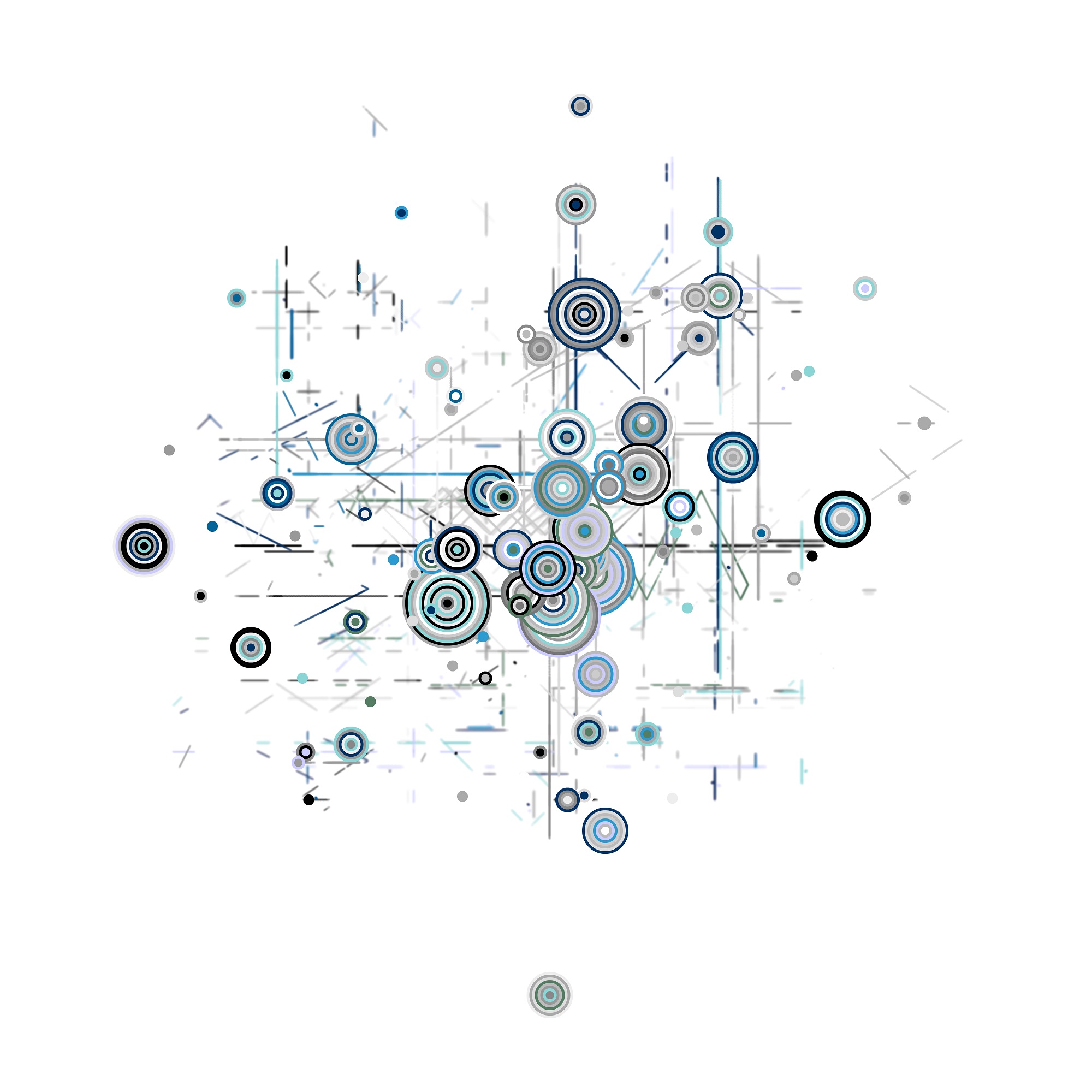
Published September 2025 as part of the proceedings of the first Alpaca conference on Algorithmic Patterns in the Creative Arts, according to the Creative Commons Attribution license. Copyright remains with the authors.
doi:10.5281/zenodo.17084438
The cells in our bodies are made of atoms and molecules with specific geometries and charges. These basic geometries and interactions inspire many patterns in my art. Sometimes, the source of the pattern is obvious. At other times, it’s more abstract.
Science is all about finding and communicating patterns. The goal of this talk is to share how patterns in one field, like Biochemistry, can inspire patterns in artwork.
The intersection of Art and Science is usually seen in fields like illustrations, charts, and diagrams. Many artists (including myself) also take inspiration from Science in a more abstract and fine art direction.
It all started with Chemistry. I was developing a simple animated Chemistry simulation. The particles represented atoms.
While debugging my code and improving my collision detection, I programmed the system to draw circles when two particles got close enough to interact with each other (a collision event).
In the code, each particle, was assigned an Atomic Number and this set up the rules for which particles could interact with each other. For example, a Hydrogen atom could bond with an Oxygen atom.
As part of debugging, I added code that would draw a circle around particles when they collided. It worked, and I finished the project. I saved a version with my degugging code, seperately.
The output of my visual debugging looked interesting, so I started playing with it, tinkering with the code and pushing into creative coding.
Before I knew it, I had found my voice as an artist.

In later iterations, I kept playing with my particle system code base and exploring more complicated patterns.
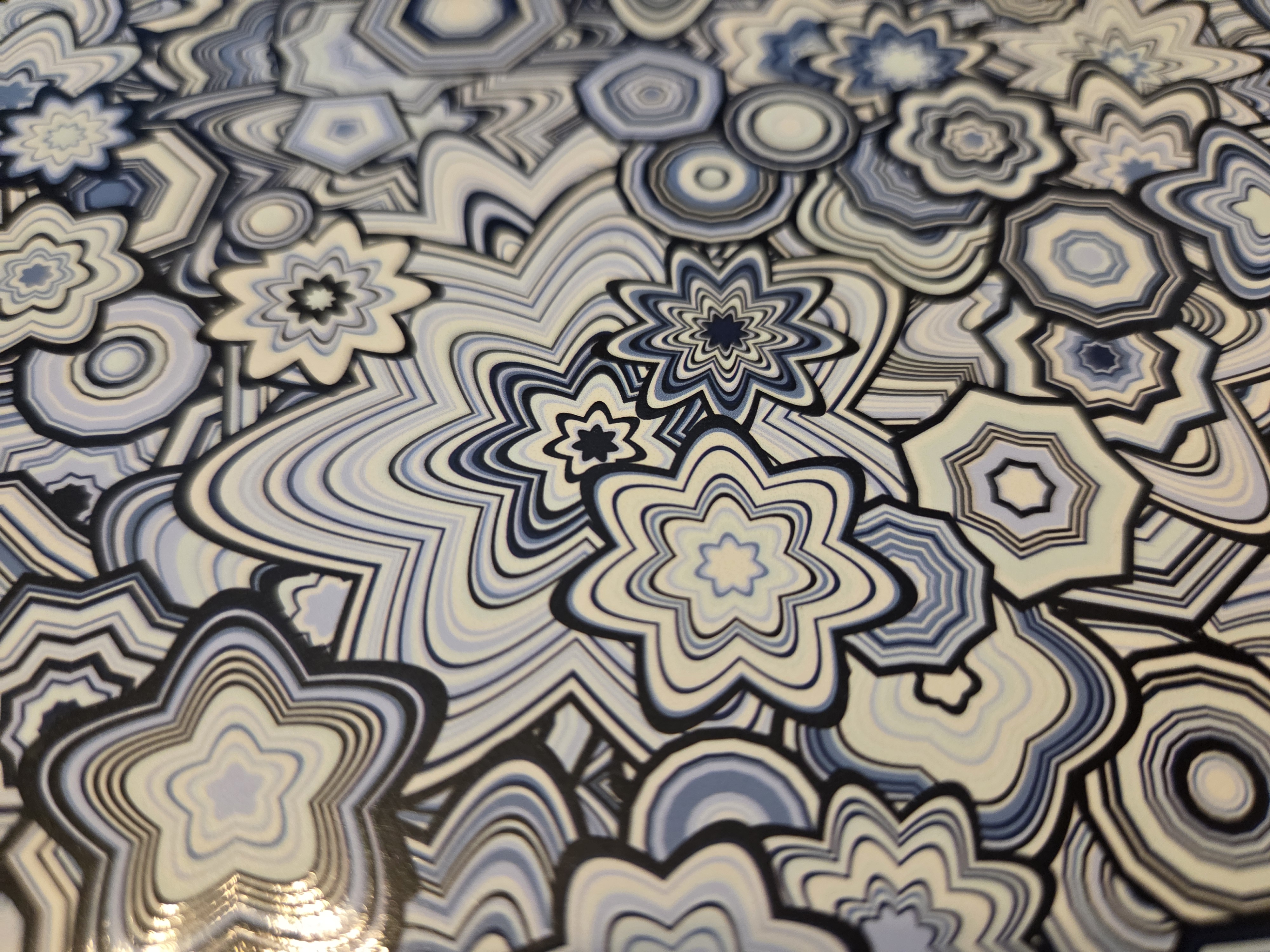
Not all of my code created art is based on a particle system. A lot of the code looks very similar, but collision detection isn’t always involved.
Sometimes, the point is to explore growth patterns in natural structures like neurons. The patterns in this piece are based on Pyramidal nerves. These are a type of neurnon found in the brain, including the cerebral cortex.
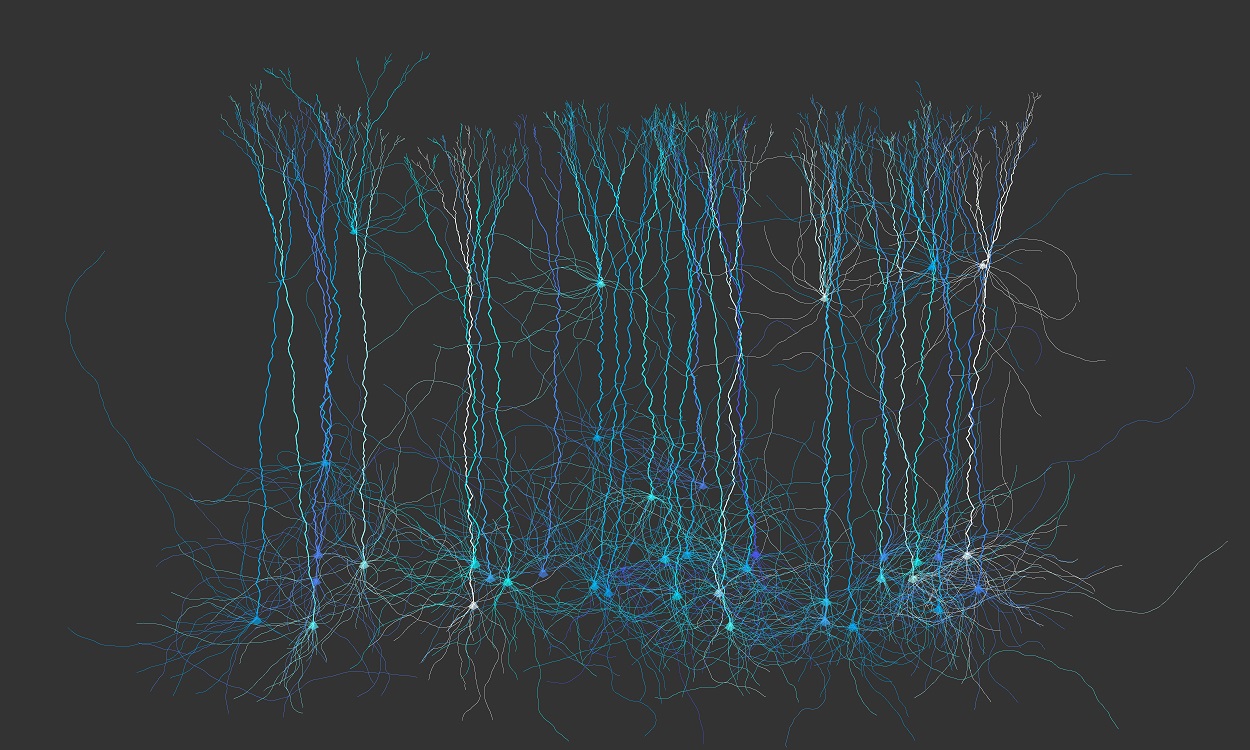
In Biochemistry, the atoms that form molecules get even more interesting. Proteins are made from strings of amino acids, and their shapes are determined by the shapes and charges of each amino acid in the sequence. As they are built by the ribosomes in our cells, the ‘string’ folds into 3d shapes.
The Python programming language has an interesting feature, in that it can take it’s own text-string as data input.
In this piece, “Self Drawing Code”, I’m taking advantage of that feature. I thought, what if I could write a script that drew a picture of itself? I could write the script to process the text string, character by character, as if it was a protein (a string of amino acids) being built by a ribosome from an mRNA strand.
I went more abtract, from the model of proteins. First, I simplified to 2-d space, whereas proteins are 3-d structures. Second, I simplified patterns of atomic bonding angles and amino acid shapes, into simple 2-d angle changes when a ‘space’ character was encountered in the text-string.
For the colors of the dots, I mapped characters to the frequencies of the characters in the string.
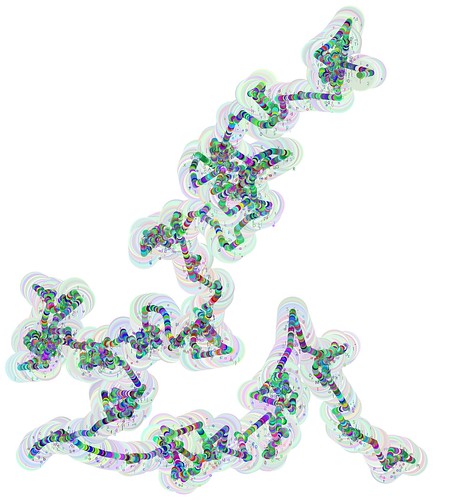
While I often create with code and data, in recent years I’ve also been creating works by hand with a glass dipping pen.

To draw with this pen, it must be dipped in ink every few strokes, like loading a paint brush with more paint. This forces me to slow down as I work, and it has become part of my daily meditation. The process is calming, and this comes through in the finished artwork.
Back when I was a Biology student, drawing was an integral part of my note-taking and study practice. In fact, many of my exams involved drawing diagrams and labeling them. Many of these patterns come through in my artwork.
In this drawing, I’m playing with patterns inspired by phospholipids and proteins that form cell membranes.
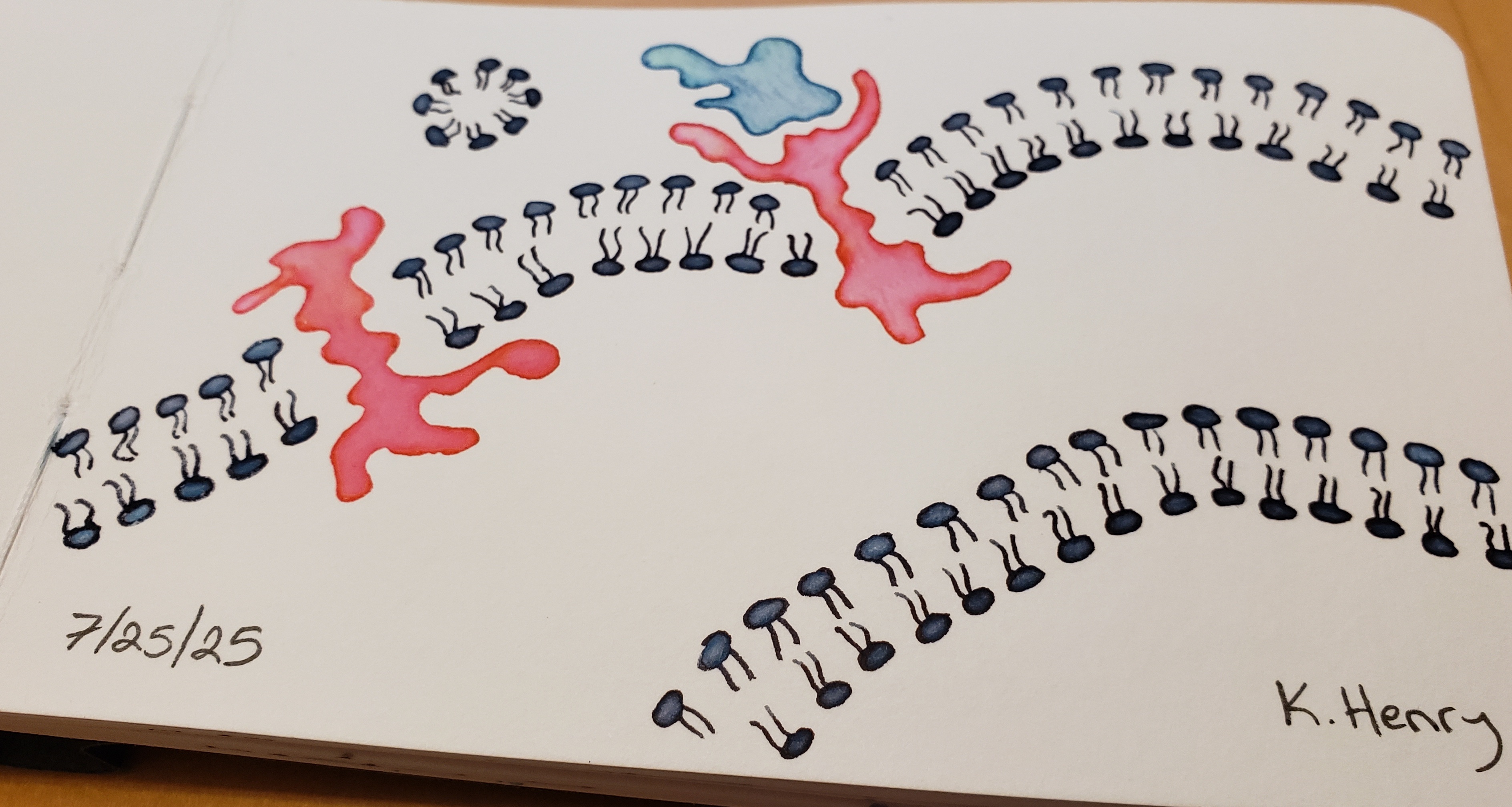
I did not enjoy the years of Chemistry courses, required for my Biology studies, until I go to Biochemistry.
In Biochemistry, atomic angles finally got through to me. Now, they inspire many patterns in my art.
The number of protons (atomic number) of an atom physically dictates how many bonds an atom can form and the angles of these bonds.
When I start a pattern in my drawings, I think of the motifs as atoms and how many bonds or connections they can form. There are many children’s construction toys that have similar limitations. Tinker-toys come to mind.
In my chemistry inspired drawings, I start with a set of motifs (atoms), working my way to the edge of the paper.
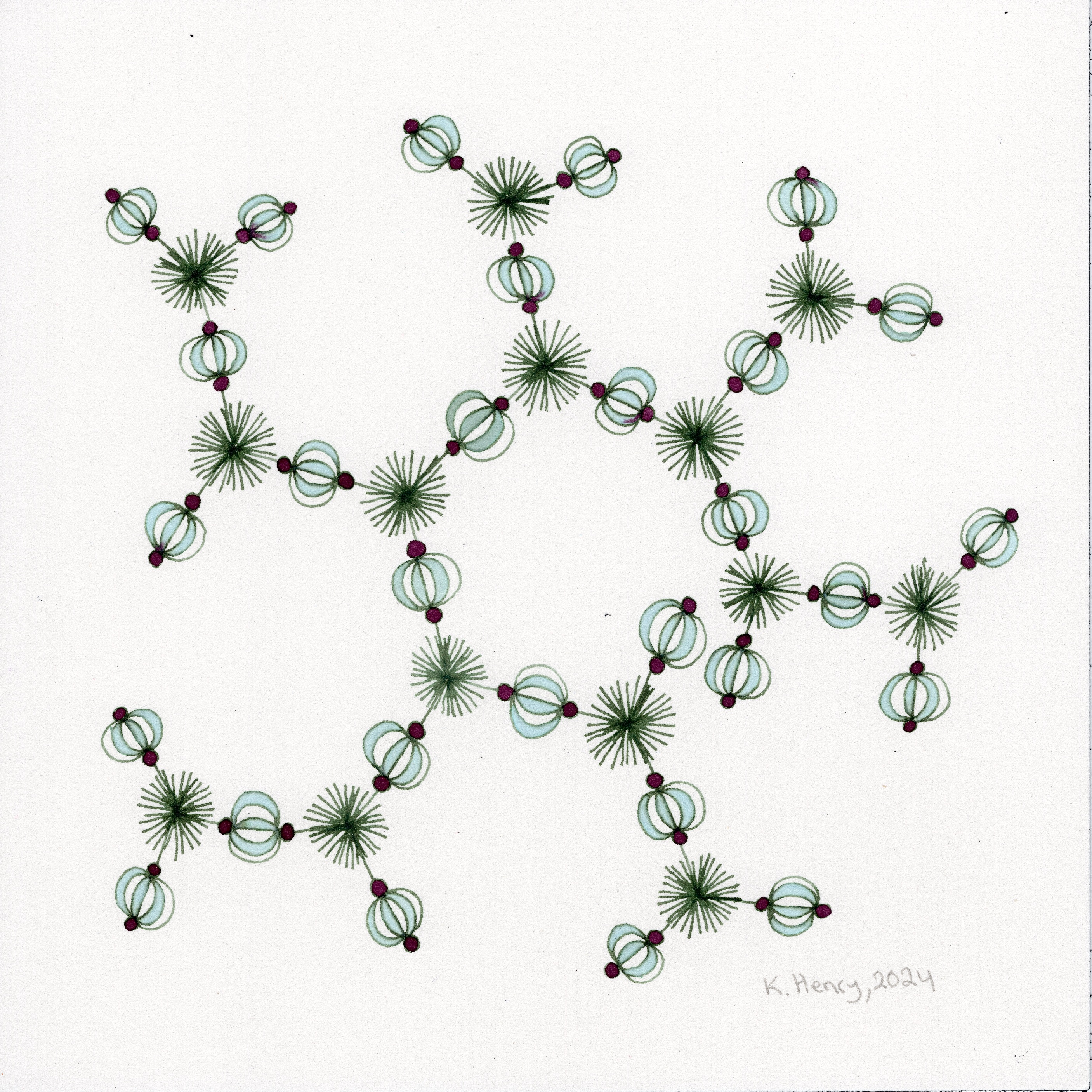
The patterns in many of my hand drawn pieces are often derived from patterns in chemistry. I add one “atom” at a time, following simple rules I assign to each “atom”. Even if they don’t look anything like a chemistry diagram. To me, these floral motifs are atoms.
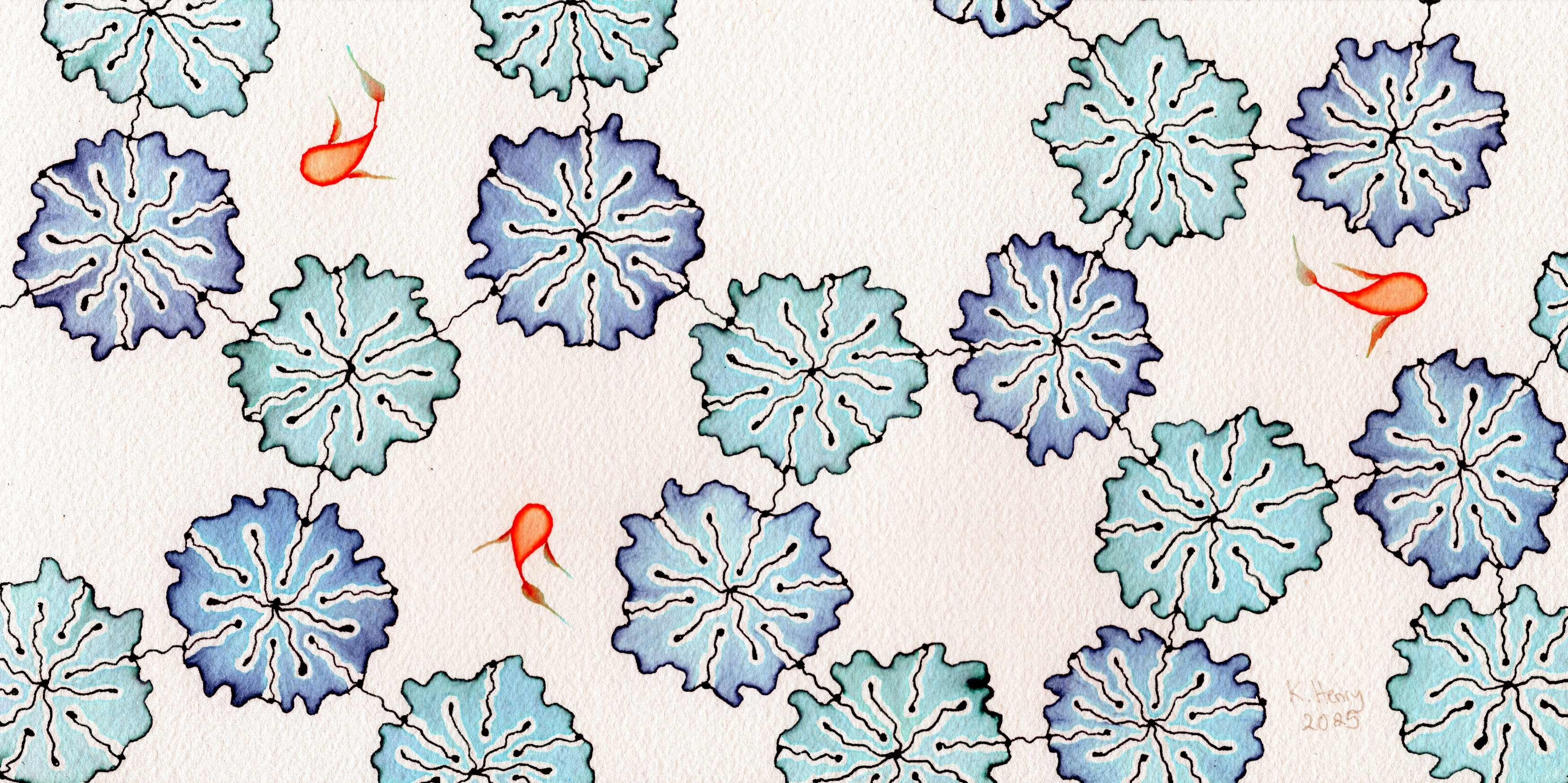
In artworks, we can push and play in abstract realms.
Inspiration for art can come from anywhere. Much of my own inspiration comes from Science, especially Biochemistry.
Play is an important part of creating anything, especially art. By allowing ourselves to play, we may create all new artforms and find our unique voices.
Sidenote: If you’re not already aware of it, you may enjoy the #SciArt tag, across social platforms. You may also find art with the #GenerativeArt tag. However, since the appropriation of the term “Generative”, many artists, including myself, have started calling their work “Procedural” instead.
Some of my work can be seen on my portfolio.